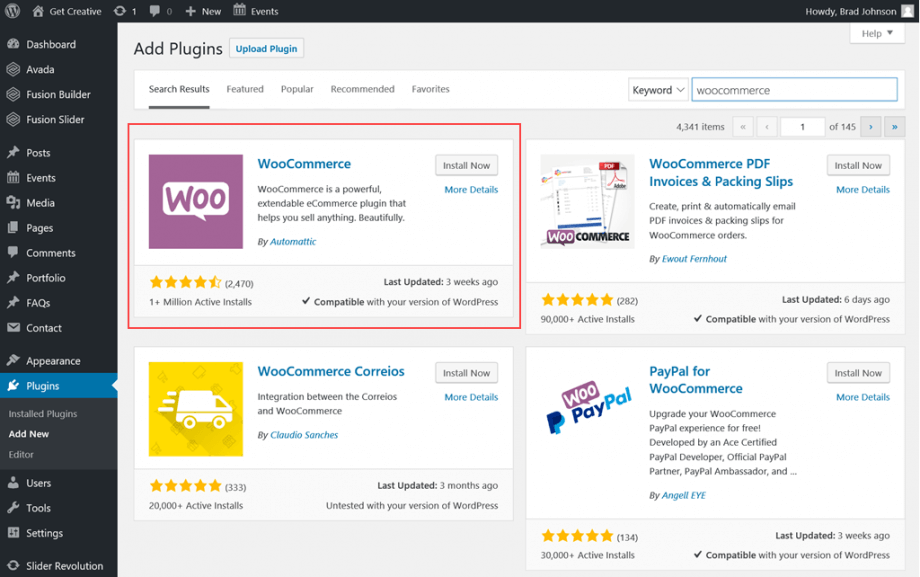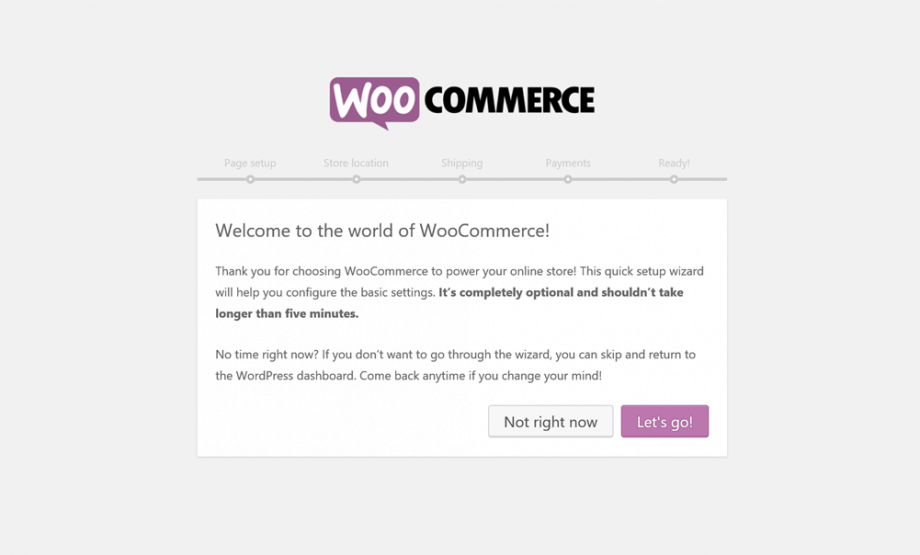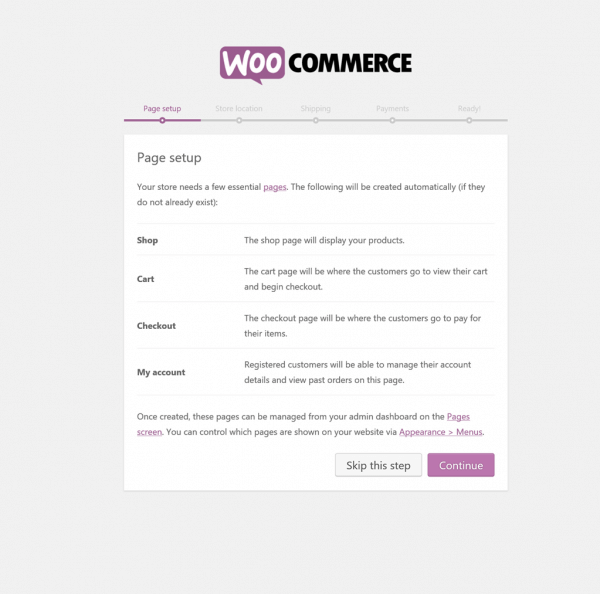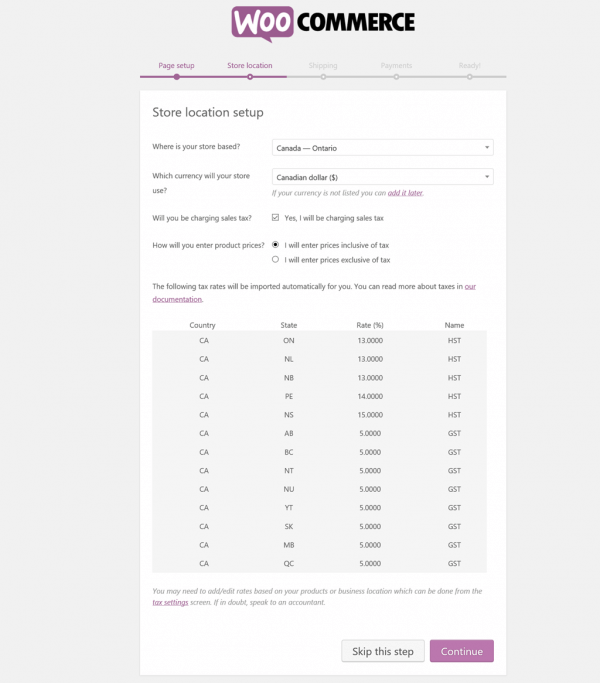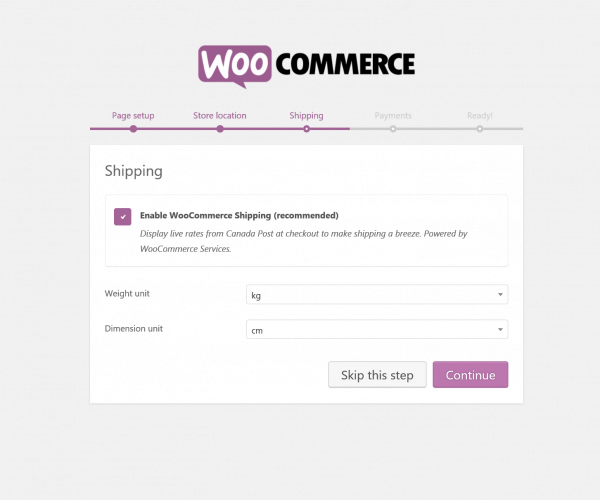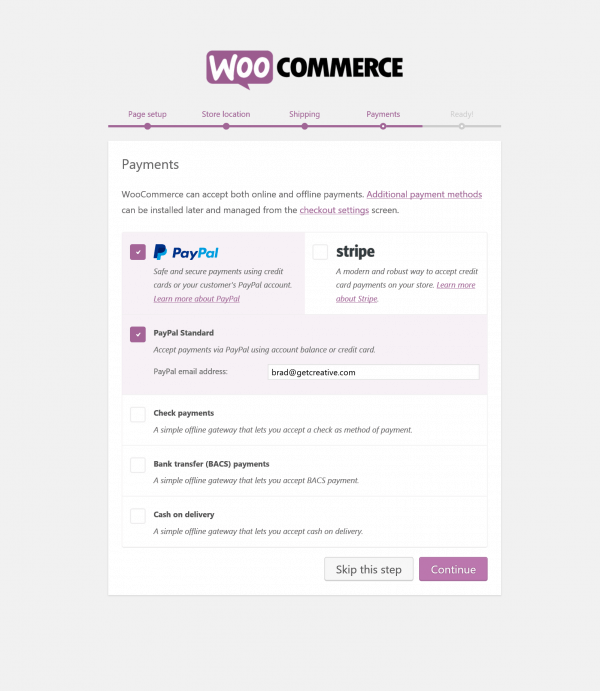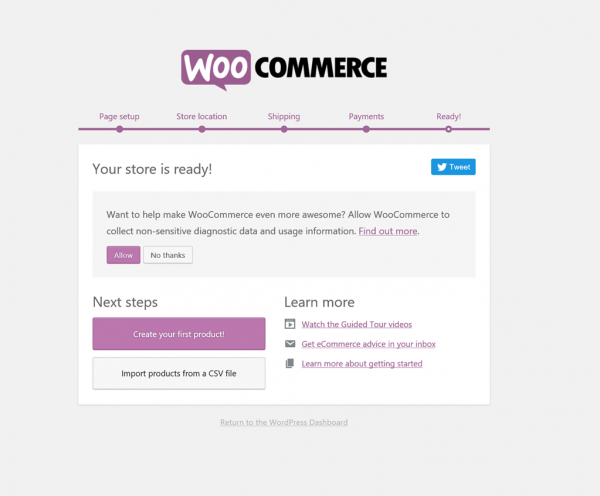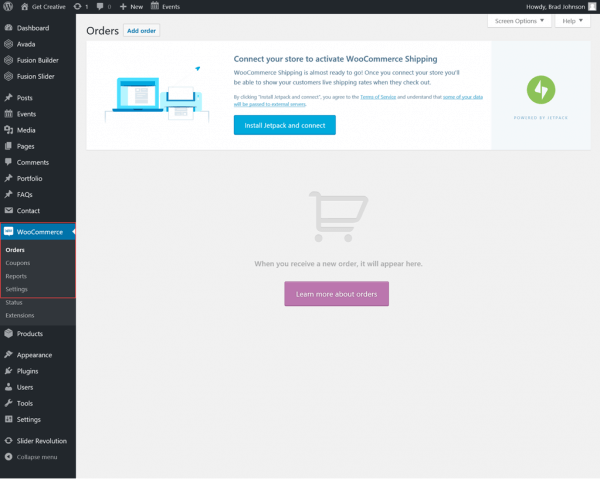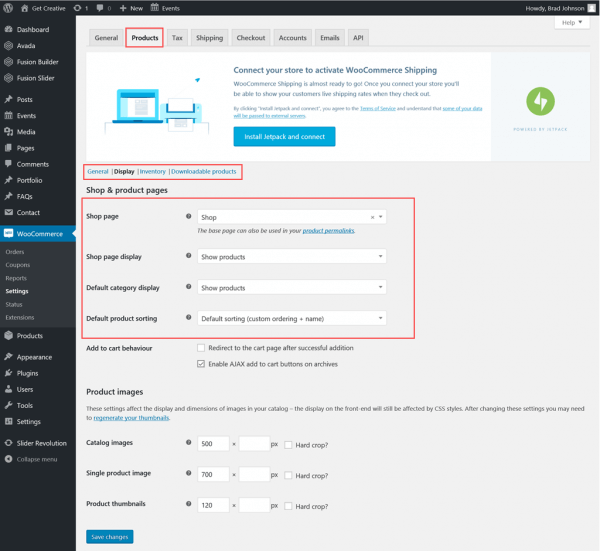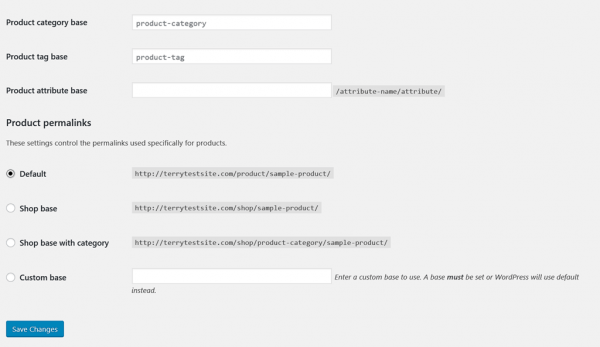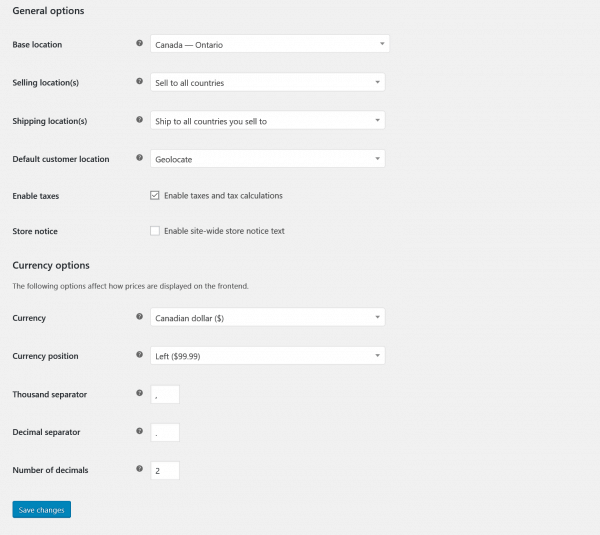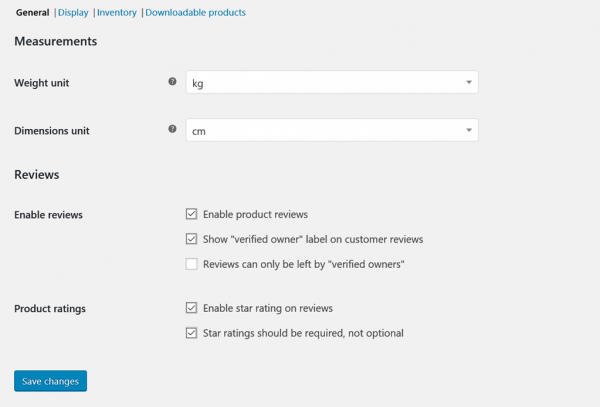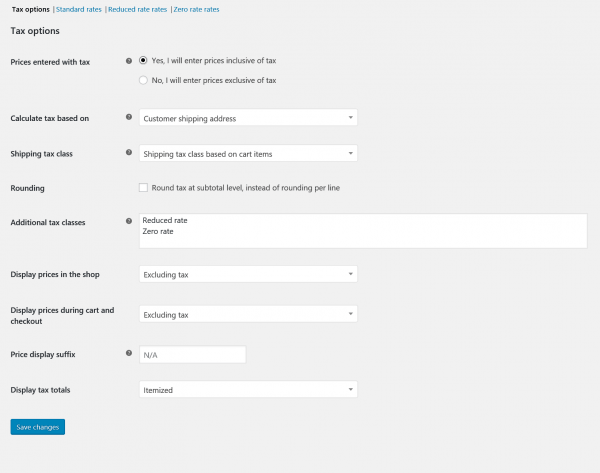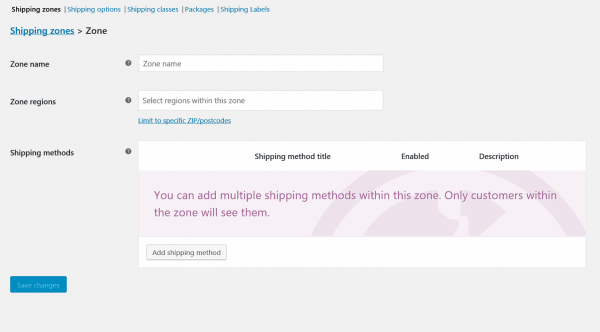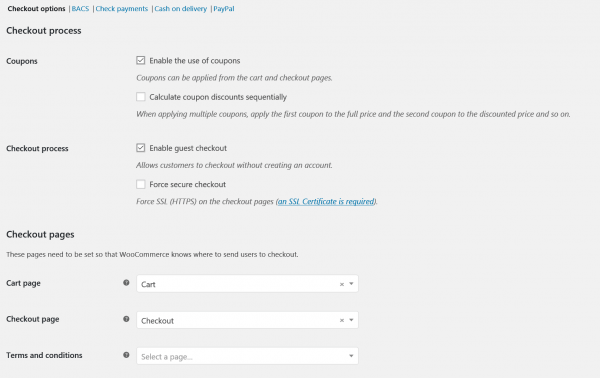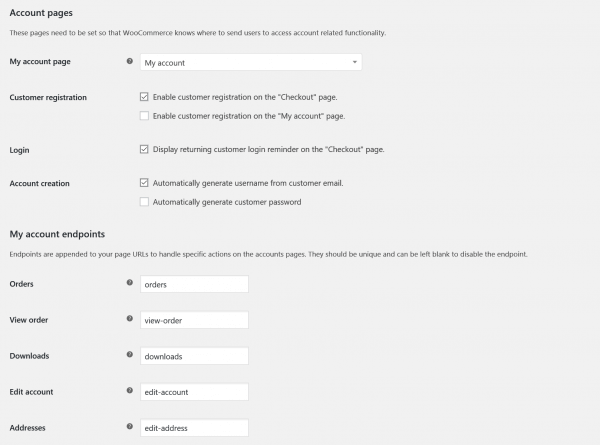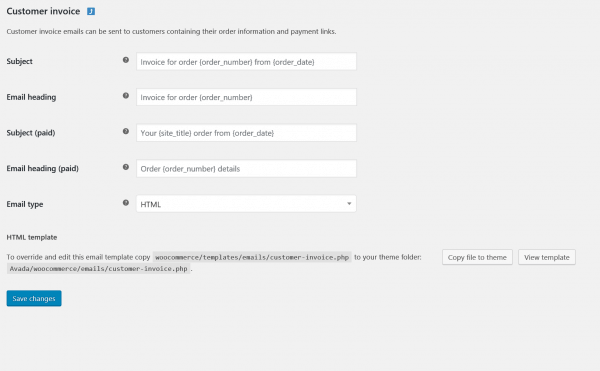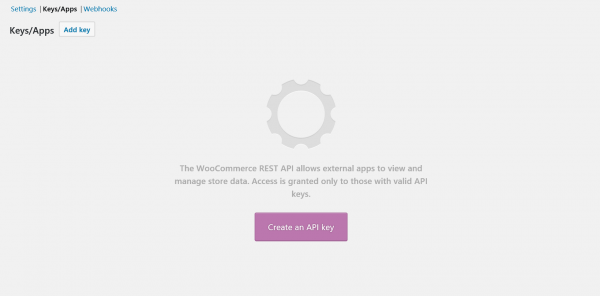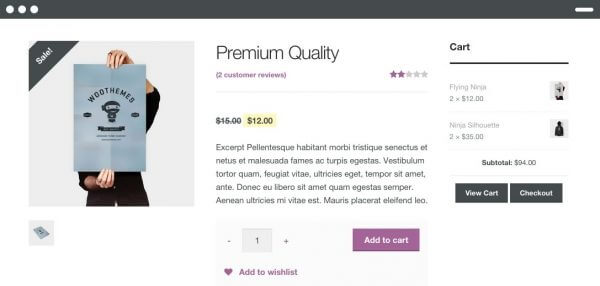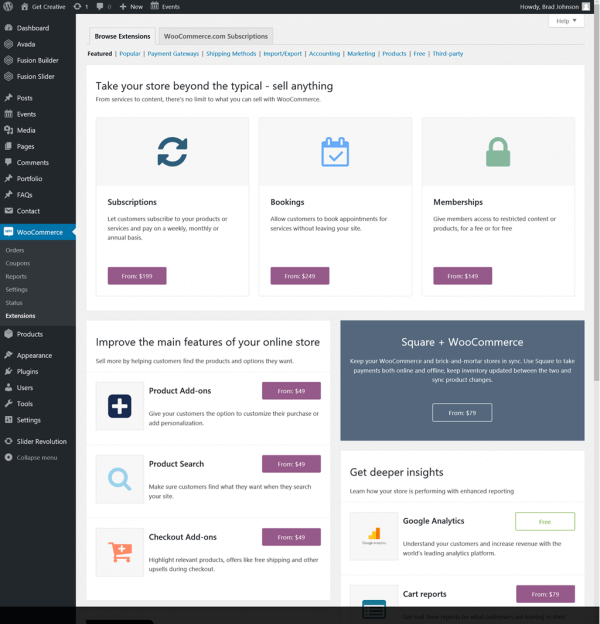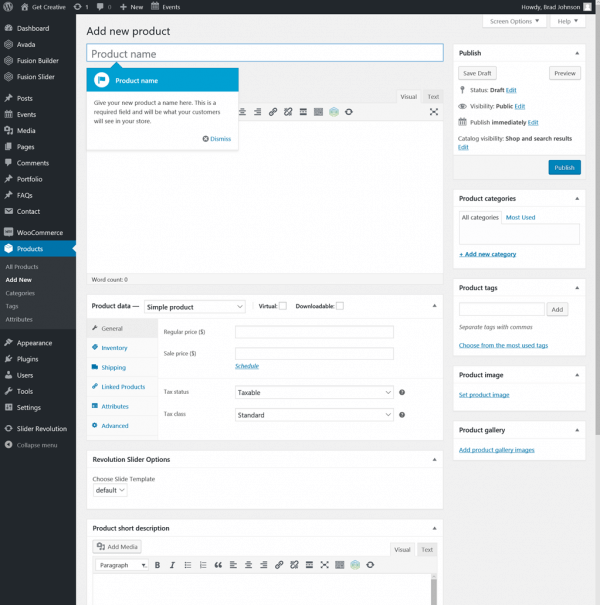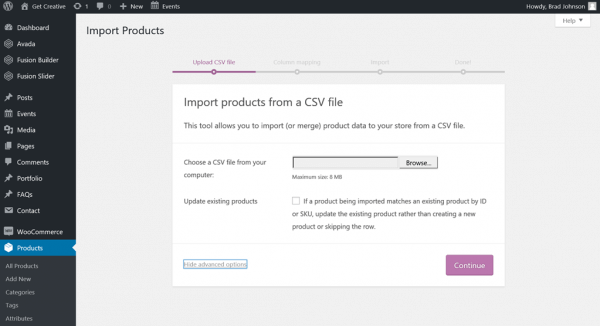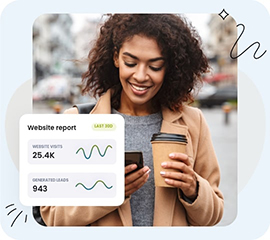While WordPress is best known as a blogging platform, it can be used to publish a wide variety of websites, including eCommerce sites. In this article, we’ll show you how to set up a WordPress eCommerce site.
If ease of installation and simple, convenient operation is at the top of your list of requirements, then WordPress, together with its WooCommerce retail plugin, may not be the right choice. While you benefit from granular control over the design and delivery of your website, some technical knowledge is required to get up and running with a WordPress eCommerce store.
To avoid fees from hosted platforms such as Shopify, WordPress and WooCommerce could be a great starter platform for getting your business going without setting up a dedicated payment platform.
Follow the steps below to set up your WordPress eCommerce site.
1. Install WordPress
As your store will be running on a WordPress installation, it makes sense that your first step is to get WordPress running on your server. You can follow this HostPapa knowledge base article, which takes you step-by-step through the installation.
Once your WordPress installation is live, you can tailor its design and features using available themes and plugins. Find out more in the following knowledge base guides:
2. Install the WooCommerce plugin
eCommerce features are supported in WordPress via a plugin called WooCommerce. Created by a third-party developer, WooCommerce’s user base grew quickly from launch and WordPress’s developer, Automattic, acquired the plugin. It offers a comprehensive array of retail features out of the box and supports hundreds of third-party addons that further extend its capabilities.
The WooCommerce plugin builds a framework of custom pages on top of WordPress’s introductory post and page types. They include product and product category pages, shopping cart features and payment processing, plus a host of more complex features, including tax and shipping controls, currency management, inventory features and more.
WooCommerce’s basic feature set – which includes everything you need to get up and running with an online store – is available at no cost. However, depending on your requirements, you may need to take advantage of third-party extensions for WooCommerce, many of which require a one-off or subscription payment.
You can check the complete documentation for WooCommerce over at the developer’s website but for now, let’s get WooCommerce installed and configured for a basic eCommerce store.
In your WordPress administration dashboard, head to Plugins > Add New and search for WooCommerce.
Click the Install Now button to download and install the plugin. Once the plugin has been activated, via the Activate button, you’ll be presented with a quick setup wizard designed to help you configure basic settings. The wizard is optional but recommended. Click Let’s go! to get started.
3. Configure WooCommerce via the Quick Start Wizard
The wizard proceeds by creating several page templates.
- Shop – Displays your products.
- Cart – The shopping cart used to bundle purchases and begin checkout.
- Checkout – The payment processing page.
- My account – An area for registered customers to manage their accounts and view previous orders.
Once the pages are created, like any other WordPress page, they can be managed from the Pages menu. You can control which pages are displayed on your site via the WordPress menu editor at Appearance > Menus.
Click the Continue button to proceed to the next step.
4. Configure store location, currency and tax settings
Next, you should configure Store Location settings. Select the country and state/province where your store is located and the currency your store will use. If you are charging sales tax, select how you will be entering product prices – you can choose to enter prices inclusive or exclusive of sales tax. WooCommerce will automatically calculate taxes depending on your customers’ location.
You may see that WooCommerce imports state/provincial tax rates for you. Additional or amended rates can be created in the WooCommerce tax settings screen later.
Click Continue to head to the next step.
5. Configure shipping settings
The next page focuses on your store’s shipping configuration. The included WooCommerce Shipping extension can display live shipping rates (based on parcel size/weight) from many local shipping providers. Use the dropdown menus to configure the Weight and Dimension units that the store will use to calculate shipping costs.
Once again, click the Continue button to proceed.
6. Configure payment settings
Next up is the payment configuration. WooCommerce supports a swathe of payment gateways – many via third-party extensions – but you can get up and running quickly with integrated PayPal and/or Stripe payment processing, among other offline methods.
You’ll need accounts with these providers, so if you have yet to sign up, do so now, then enter your account details in the WooCommerce payment settings screen.
Click the Continue button to proceed. You’ll be asked for permission to collect non-sensitive diagnostic data during your use of WooCommerce. Make your selection, and that completes the WooCommerce Quick Start Wizard.
At this point, you’ll be invited to start adding products to your store but, before you do so, it’s worth taking a step back to review how WooCommerce integrates structurally with WordPress. So, select the Return to the WordPress Dashboard link at the bottom of the page.
7. Configure your online store structure
Now that you have some of WooCommerce’s basic features set up, it’s worth checking out other settings to optimize your configuration. In the sidebar, head for WooCommerce > Settings to take a look.
The first thing you may notice, depending on your core WordPress configuration, is that WooCommerce requires a Jetpack connection to activate the WooCommerce Shipping module. Jetpack is a free, value-added plugin for WordPress that offers a wide range of extended features. If you have yet to install and connect your WordPress installation to Jetpack, you’ll need to do so now. Click Install Jetpack and connect to proceed. Installation may take a minute or so.
Once you have installed Jetpack, continue browsing the WooCommerce Settings tabs – sections include General, Products, Tax, Shipping, Checkout, Accounts, Emails and API.
You can work through each settings page at your leisure, but first, click the Products tab, then the Display sub-tab to review your Shop & product pages settings. The Shop page dropdown menu defines your store’s front page. By default, it is set to Shop. If you want the storefront to be hosted with a different page name – for example, “store” – simply head to Pages in the WordPress sidebar and rename the page.
While you’re in the Pages section, please check out the other default WooCommerce pages created – Cart, Checkout and My account.
Back in the Products > Display tab of the WooCommerce Settings menu, look underneath the Shop Page menu for a link to your Product Permalink settings.
Permalinks are the permanent URLs to your WordPress blog posts, categories, post archives and shop. They’re essential for search engine optimization and make it easier for third parties to link to your website’s pages. As such, they should be as descriptive and straightforward as possible.
The default permalink settings for WooCommerce should work well, but you’re free to customize your settings, should you wish.
General store settings
With your store structure confirmed, you can now review the rest of the WooCommerce settings, starting with the General tab. You’ll recognize many of these settings from the QuickStart Wizard, but if you made an error during installation or need to tweak your location, shipping, currency settings and so on, you can do so here.
Product settings
As discussed earlier, the Products tab is further segmented via several sub-tabs, covering General settings (where you can change measurement settings and enable/disable product reviews), Display (where you can define default product sorting and image sizes), Inventory (covering stock management settings) and Downloadable products.
Your selection here will depend on the type of eCommerce store you’re building and operational preferences, but most of the settings here are very straightforward. Be sure to refer to the WooCommerce knowledge base if you need more info on specific features.
Tax settings
While you configured basic tax settings during the plugin installation, you should spend some time working through WooCommerce’s tax settings pages. Detailed settings allow you to tailor your store configuration at a granular level, changing, for example, whether tax is calculated based on the customer’s billing or shipping address, adding zero rate tax categories, defining how tax is itemized at checkout and more.
Shipping settings
If you’re selling physical goods, be prepared to spend some time configuring your Shipping settings.
Here you can define the countries and regions that are eligible for shipping, add and manage shipping classes, manage shipping labels and so on. As mentioned, WooCommerce Shipping relies on a WordPress connection to the Jetpack plugin for operation.
Checkout settings
You can tailor your customers’ payment experience in the Checkout tab. Important settings here include enabling/disabling discount coupons, support for guest checkout, defining your shopping cart and checkout pages, payment gateway configuration and much more.
It’s also where you will need to configure API keys or passwords for connecting your store to your payment gateway accounts. As you add gateways to your store, expect to see dedicated sub-tabs appear in the Checkout section for each.
Account settings
The Accounts tab allows you to configure store features such as customer registration, account creation parameters and URL endpoints for specific account pages. Again, the default settings are sufficient to get you up and running, but it’s simple to tailor settings to optimize the customer experience.
Email settings
To customize your customer communications, head to the Emails tab. Here you’ll be able to amend standard templates for a wide range of automatically generated communications, including order confirmations, cancelled or failed orders, order refunds, invoices and more.
You’ll also be able to define the From and Reply to settings for your store-generated emails, ensuring you can link your store transactions with customer support resources in case of a query.
API settings
Finally, the API Settings menu allows you to provide access for external apps to view and manage your store’s data.
Designing your store
While you could choose to create your store’s design from scratch, a far easier route is to take advantage of WordPress themes that specifically support WooCommerce. The plugin supports a free out-of-the-box theme called Storefront that can be installed from the WordPress Themes section.
Alternatively, you’ll find a host of free and premium WordPress themes available online. For the best features and a comprehensive array of styles, check out repositories like Theme Forest.
Extending WooCommerce with third-party addons
One of the main reasons for WooCommerce’s success has been the explosion in third-party extensions created for the plugin. If you find that WooCommerce’s core features lack an area, head to WooCommerce > Extensions in the WordPress sidebar and hunt for alternatives.
From payment gateway extensions and shipping modules through accounting plugins and new sales and marketing features, you’ll find a host of goodies on offer – most of which will require payment.
Add your first product
Once you’ve spent time configuring your store settings, you’ll be ready to start adding products to your inventory.
While you can, of course, add products individually (via Products > All Products) in the WordPress sidebar, a more convenient solution – especially for stores offering an extensive assortment – will be to import products from a CSV file (again, via Products > All Products).
The option allows you to build your range in a spreadsheet (or export it from another eCommerce application) then import the file into WooCommerce, saving you a lot of manual work. If you’d like to go down this route, build yourself a CSV template by following these steps:
- Add all the plugins and extensions you need, add any custom fields to your products if required.
- Create a product with all the information to be used.
- Export this product (make sure you tick the hidden fields check box).
- Open the exported CSV file and delete the product ID column.
You can now create the additional rows you need for each product you wish to import.
Building an eCommerce website takes time and dedication. However, WooCommerce supports a wide array of features and is reasonably simple to configure.
If you need help with your HostPapa account, please open a support ticket from your dashboard.
